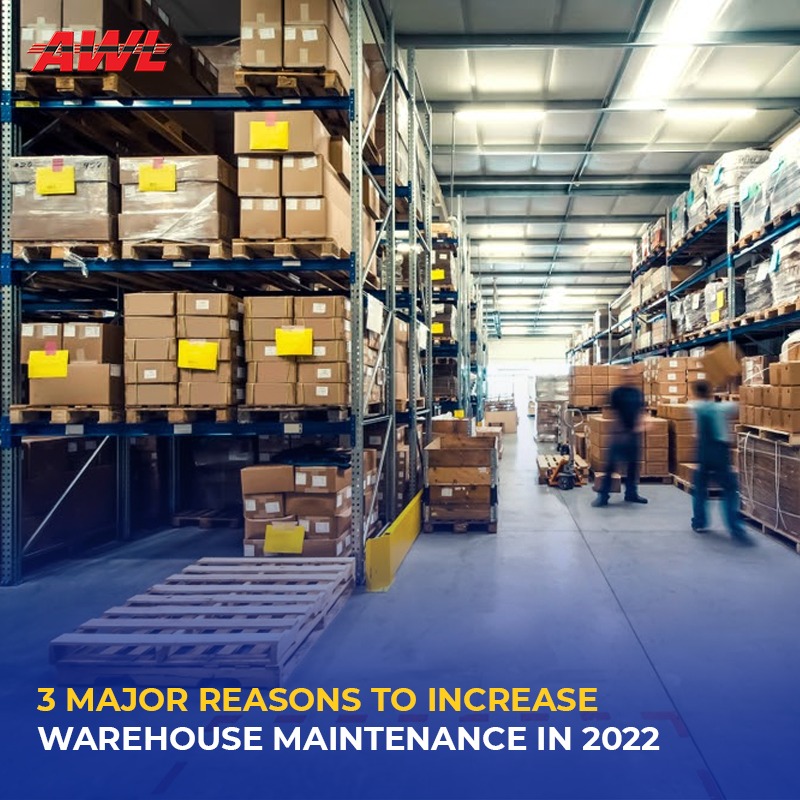

No matter what business or organizational function we are talking about, maintenance is required essentially to step up your game or even sustain your existing operations optimally. Maintenance is a daily task, especially when you are dealing with modern warehouses, as they are equipped with a broad variety and range of equipment, software solutions, and incredibly skilled personnel working collaboratively.
With the passage of time and acquiring experience, warehousing firms have established reliable and effective management practices to ensure that daily operations are carried out without any hassle. It goes without saying that the process of warehouse management is quite extensive as it involves and dedicatedly requires the firm to conduct regular inspections, corrective measures, adequate replacements, and much more.
Suppose you are backed by an efficient, disciplined, and proper warehouse maintenance strategy. In that case, you are ultimately enabling your company to cut down its operational costs, enhance the availability of critical machinery, and enhance operational efficiency and safety, and the useful lives of warehousing equipment.
Another thing to emphasize is that the strategies associated with warehouse maintenance have altered with the acceptance of technological advancements. However, with the constant modification going on, companies are still facing quite a lot of challenges. Warehousing professionals have to go through a lot on a frequent basis, and these challenges tend to affect both the operation and maintenance of warehouse equipment.
Automation has certainly emerged as a key role player in several sectors of the economy. Simultaneously, warehouse operations include many repetitive tasks that are unwieldy to the human worker. Therefore, several automation techniques have been developed to improve the work quality on the warehouse floor.
Presently, firms worldwide have been steadily introducing the concept of robot-based equipment to their warehouses. With that comes the integration of Artificial Intelligence, which facilitates the functioning and operations of self-driven forklifts, Autonomous Mobile Robots, and Automatic Guided Vehicles.
There is certainly no denying the fact that it is becoming inevitable for firms in 2022 to automate the maintenance procedures of their warehouse. As a result, suitable Computerized Maintenance Management Systems (CMMS) are adopted by companies along with centralized data management with the adequate utilization of cloud-based platforms and capitalizing on the IoT sensors for collecting real-time data on equipment performance.
With the adoption of automated warehousing maintenance strategies and the collection of relevant performance data, companies will be able to strategically handle maintenance inventories, identify and resolve recurring equipment failures, and optimize corrective measures while reducing maintenance costs.
Firms around the globe are starting to realize the impact of warehouse operations on the environment. That’s where we cross paths with the term Green Warehousing, a term indicated to sustainable warehousing operations. Each company on its path to progress is working towards minimizing its carbon footprint using low-emission equipment, using sustainable materials, and eliminating activities that don’t bring value to the company.
Maintenance will help in playing a vital role in minimizing emissions from equipment used in a warehouse. Efficient machinery demands less energy to operate, dissimilar to its defective counterparts. As a result, firms are utilizing maintenance inspections and reports to identify assets capable of emitting excessive pollutants and phase them out from routine operations.
Another crucial thing to ponder upon is to make sure that the equipment operates for an extended time. Extending the useful life of equipment with the help of proper maintenance goes a long way in preserving natural resources and limiting environmental pollution. Gain a competitive edge by transitioning to sustainable warehousing practices.
We all witnessed that the warehousing and supply chain sector experienced tremendous disruptions at the peak of the COVID-19 pandemic. Due to the restrictions imposed by the government on movement, there was little to no movement at all of the commodities. The impact of these disruptions was seen in the warehouse equipment management and reorganization of the workforce to acclimate staffing shortages.
We are required to ensure minimal or no downtime given the time frame when the demand for warehouse equipment is quite high. Any defect in the supply chain can lead to significant delays, and that’s not quite appreciable for the reputation of your company and its standards. It tends to lower the quality of products and increase operational costs.
Every company must optimize preventive maintenance schedules and create a lean maintenance inventory to facilitate timely disciplinary measures.
Leveling up your existing warehouse maintenance practices will provide your company with a lot of benefits, specifically if you are looking forward to gaining a competitive advantage. Achieving maintenance excellence while we talk about warehousing can be considered a process that demands a lot of alterations in staffing and technological requirements. Global supply chains are experiencing notable modifications due to ever-evolving consumer trends, macroeconomic issues, and geopolitics.
There is enhanced adoption of advanced technology in warehouse operations in order to improve workflows and control operational costs. As a result, firms can and must keep up with the rapid alterations by streamlining the maintenance practices while ensuring the establishment of reliable and effective maintenance plans.
Read More: How does an efficient warehouse help smoothen supply chains?

